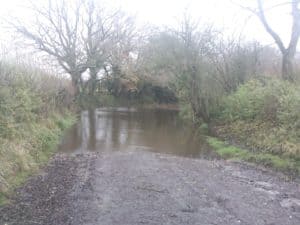UKDN Waterflow (LG) Ltd is backing a call by Environment Agency Chief Executive Sir James Bevan for property owners to make sure they are prepared to counter winter floods.
The Environment Agency was yesterday (12 October 2016), carrying out an exercise to demonstrate how it will deal with a major flood, if it occurs during the winter months.
Sir James Bevan told BBC Radio 4’s Today programme the agency is now better prepared to prevent flooding and support communities that are hit by floods. But he said property owners also have responsibility for carrying out their own flood protection.
He said the Environment Agency is working closely with other organisations, such as utility companies, local authorities and emergency services to improve flood resilience.
Last month, UKDN Waterflow (LG), part of Lanes Group plc, published a 10-point guide on how property owners – whether homeowners or businesses – can do all they can to prepare for flooding.
One tip was to ensure that drains are clear and in good repair so they have maximum capacity during periods of high water flows. Another was to avoid putting fats, oils, wipes and sanitary products down the drain, as this can lead to blockages.
Also, property owners should view the Environment Agency’s flood map to see if their property is in a higher risk area, where more intensive flood prevention measures are recommended.
Property owners can also invest in flood protection equipment, such as flood sacks, sand bags and door and window barriers. They should also prepare an emergency flood kit, including a readily accessible store of non-perishable food, and clean water.
Richard Leigh, Group Business Development Director for Lanes Group, said: “We are often at the forefront of helping clients, which include utility companies local authorities, respond effectively to flooding, whether that be localised flooding events or major flood emergencies.
“Flooding can have devastating consequences for people and communities. We agree with the Environment Agency that, with some carefully-considered planning, flood resilience of individual properties can be significantly improved in many circumstance.”
The Environment Agency has published a leaflet: What To Do Before, During and After a Flood.
Its advice to people living and working in areas at greatest risk of flooding includes making sure they receive the agency’s flood alerts. People in at-risk areas should also have their own Personal Flood Plans.


